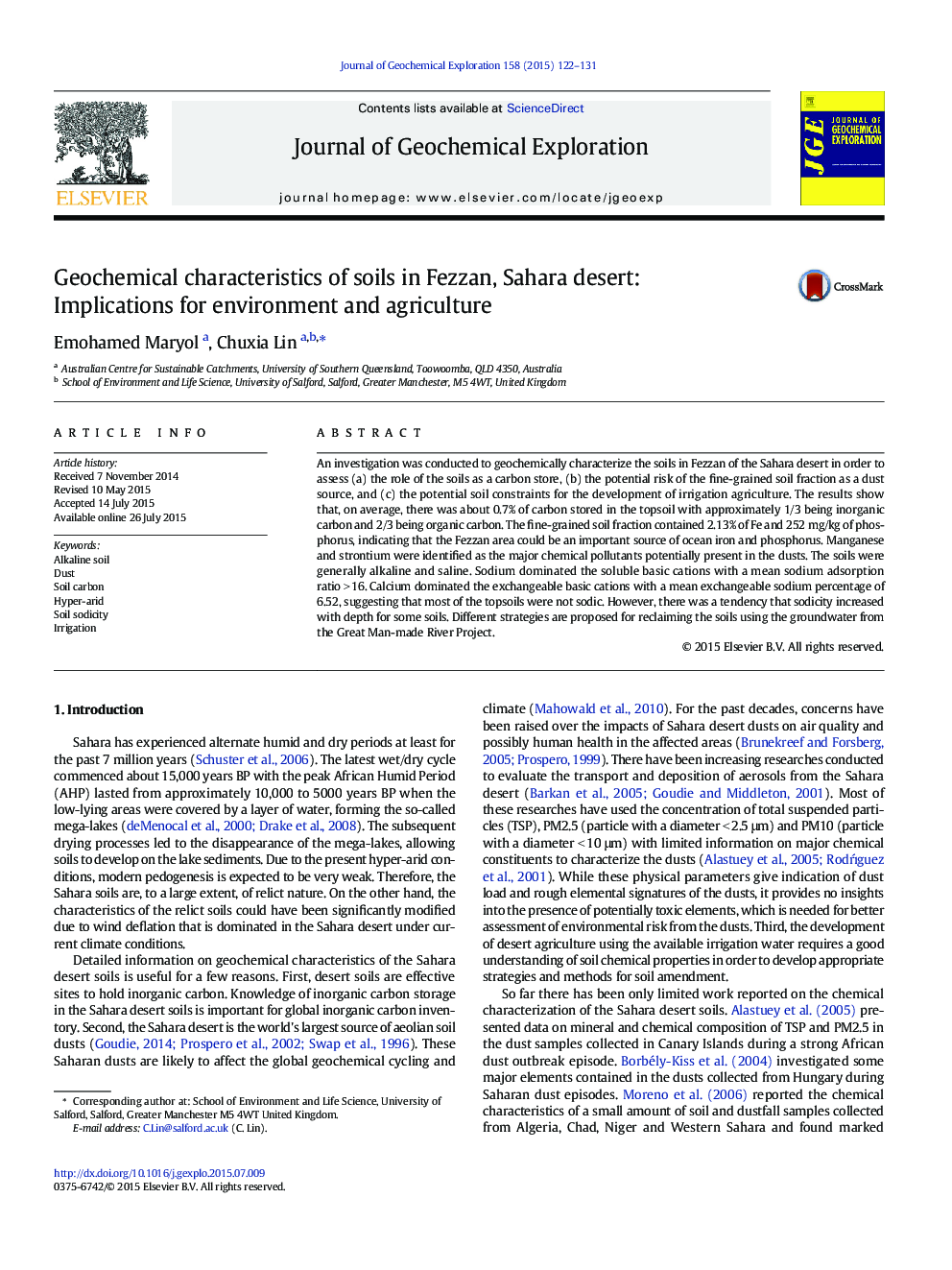| Article ID | Journal | Published Year | Pages | File Type |
|---|---|---|---|---|
| 4457030 | Journal of Geochemical Exploration | 2015 | 10 Pages |
•Sahara desert is the world's largest source of aeolian soil dusts.•Desert soils are effective sites to hold inorganic carbon.•Development of desert agriculture requires knowledge of soil chemical properties.•Insufficient detailed information on geochemical characteristics of the Saharan soils•The findings have closed these knowledge gaps.
An investigation was conducted to geochemically characterize the soils in Fezzan of the Sahara desert in order to assess (a) the role of the soils as a carbon store, (b) the potential risk of the fine-grained soil fraction as a dust source, and (c) the potential soil constraints for the development of irrigation agriculture. The results show that, on average, there was about 0.7% of carbon stored in the topsoil with approximately 1/3 being inorganic carbon and 2/3 being organic carbon. The fine-grained soil fraction contained 2.13% of Fe and 252 mg/kg of phosphorus, indicating that the Fezzan area could be an important source of ocean iron and phosphorus. Manganese and strontium were identified as the major chemical pollutants potentially present in the dusts. The soils were generally alkaline and saline. Sodium dominated the soluble basic cations with a mean sodium adsorption ratio > 16. Calcium dominated the exchangeable basic cations with a mean exchangeable sodium percentage of 6.52, suggesting that most of the topsoils were not sodic. However, there was a tendency that sodicity increased with depth for some soils. Different strategies are proposed for reclaiming the soils using the groundwater from the Great Man-made River Project.
